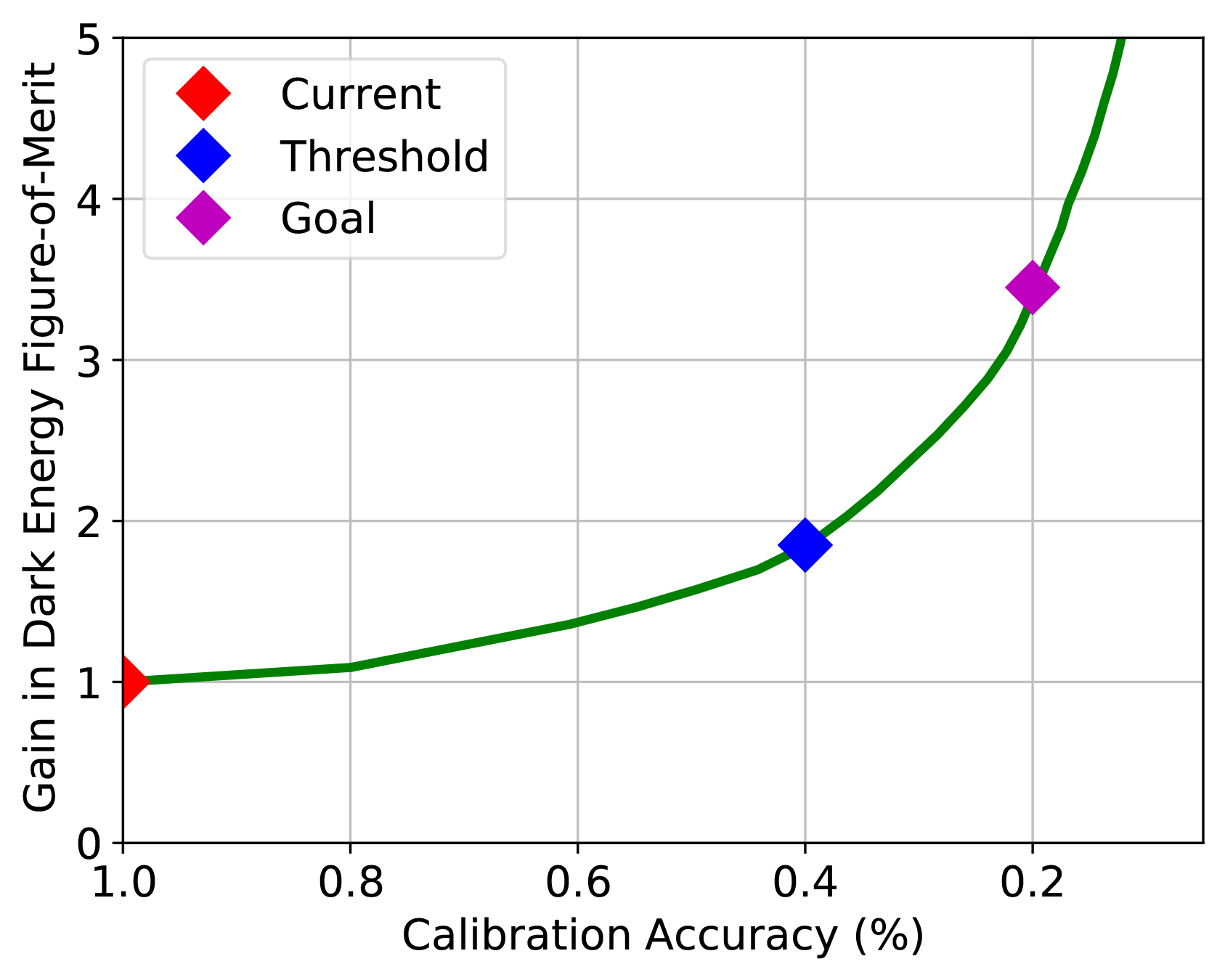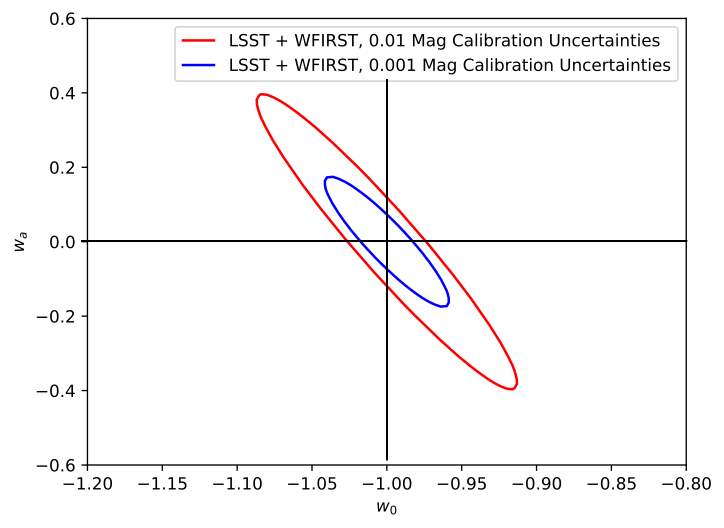Flux Calibration
One does not necessarily think of flux calibration as "science" per se, but it enables so much science that it is itself a key discipline. Currently the fundamental flux calibration reference system, based on white dwarf atmospheric models and used for astronomy, astrophysics and cosmology, is only accurate to ~ 1%. This level of accuracy is insufficient for Stage-IV cosmology experiments like LSST (Rubin) and NGRST since an error on the flux calibration translates to an error on the dark energy equation of state that is 2 - 3 times larger. Indeed, those experiments require wavelength-relative flux references accurate to better than 0.4%n, with a goal of 0.2%, in order to be able to accurately compare fluxes in the rest-frame wavelengths between science targets at high and low redshifts. The figure on the left below, shows that our calibration requirement of 0.4% will improve the measurement of dark energy by about 1.9 times – nearly doubling the accuracy that these multi-billion dollar investments can achieve. For our calibration goal of 0.2% the improvement is even more dramatic, reaching 3.6 times what otherwise would be achieved. The figure on the right below, shows that most of the improvement is along the direction of the wa parameter that constrains how much dark energy may vary over the history of the universe. This direction is what these experiments most desire to measure.


Science Objectives:
Provide SI-traceable flux calibration to ground-based telescopes to dramatically reduce systematic errors on the measurement of dark energy and to characterize the stars hosting exoplanets.
Observable and Measurements:
Observe calibrated beam from ORCAS from any ground-based telescope, especially Rubin Observatory, telescopes on Maunakea, and possibly the Hubble Space Telescope. Calibrated beams in chosen monochromatic wavelengths, singly for imaging, or several at a time for spectroscopy.
Key Functional Requirements:
Monochromatic wavelengths centered on Rubin Observatory LSST and Roman Space Telescope WFI filters. Fluxes levels detectable by 1 - 10-m class telescopes for exposures of 10 min or less.
ORCAS Uniqueness:
The calibrated beam from ORCAS will appear just like a star, thereby tracing the exact same path through telescope and instrument as science targets and removing one of the main sources of flux calibration uncertainty. Used in parallel with AO observations, the PSF will sample similar atmospheric turbulence and wavefront correction errors – invaluable for accurate analysis of AO science targets.
